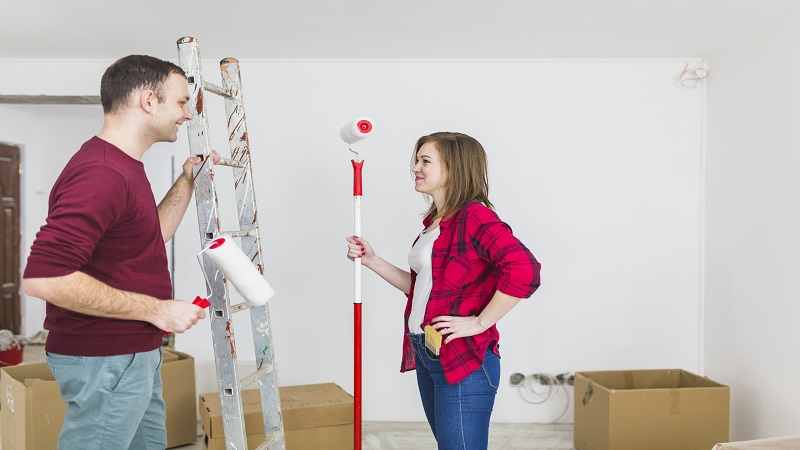When it comes to selling a home, first impressions matter. Buyers often make quick decisions based on how appealing a property looks and how functional its features are. A well-maintained, updated home can command a higher price and attract more potential buyers. For homeowners, the key is to know which renovations provide the greatest return on investment. Not all upgrades add value, so it’s essential to focus on improvements that genuinely increase a home’s market appeal.
This article explores the most effective home renovations that can boost your property’s selling price, backed by practical advice and insights. The ftasiafinance approach highlights timeless upgrades that not only add beauty but also functionality, ensuring homeowners get the best value for their renovation efforts.
Why Renovations Matter in the Housing Market
Renovations are more than cosmetic changes—they’re an investment strategy. Buyers typically look for move-in-ready homes that require minimal effort after purchase. By making thoughtful upgrades, homeowners can stand out in a competitive housing market.
Some reasons why renovations can significantly impact a selling price include:
-
Improved Aesthetics: Modern finishes and designs appeal to buyers’ preferences.
-
Functionality: Practical upgrades such as storage, energy efficiency, or updated layouts enhance usability.
-
Market Value Alignment: Renovations can bring an older home up to current market expectations.
-
Buyer Confidence: A home with recent updates signals good maintenance and reduces perceived risks.
Renovations with the Best Return on Investment
Not all upgrades are created equal. Some renovations provide an excellent return by appealing to the widest range of buyers. Below are the most impactful ones.
1. Kitchen Upgrades
-
The kitchen is widely regarded as the centerpiece of the home.
-
Buyers frequently prioritize updated kitchens because they are high-use areas.
-
Even slight enhancements can influence a home’s value.
Key kitchen upgrades include:
-
Replacing outdated countertops with granite, quartz, or durable alternatives.
-
Installing energy-efficient appliances.
-
Refreshing cabinets with paint or new hardware.
-
Adding modern lighting fixtures.
A complete remodel may be costly, but minor updates can still raise the home’s selling price considerably.
2. Bathroom Renovations
Bathrooms are another area where buyers focus their attention. Outdated bathrooms can quickly turn off potential buyers, while refreshed ones can enhance a home’s overall appeal.
Popular bathroom improvements include:
-
Installing new vanities and sinks.
-
Adding walk-in showers or modern bathtubs.
-
Upgrading tiles and flooring.
-
Improving ventilation and lighting.
Simple changes like replacing old fixtures or re-grouting tiles can provide a cleaner, fresher look without breaking the bank.
3. Curb Appeal Enhancements
First impressions begin at the curb. Buyers often decide whether to consider a home seriously before they even step inside. Improving curb appeal can dramatically boost interest.
Effective curb appeal upgrades include:
-
Repainting the exterior or front door.
-
Landscaping with fresh plants, shrubs, and mulch.
-
Replacing old garage doors with modern, stylish ones.
-
Adding exterior lighting for both beauty and security.
Homes with strong curb appeal tend to sell faster and at higher prices.
4. Energy-Efficient Improvements
In today’s housing market, energy efficiency is increasingly valued. Buyers are willing to pay more for homes that help them save on utility bills and reduce environmental impact.
Popular energy-efficient upgrades include:
-
Installing double-pane windows.
-
Adding extra insulation in attics and walls.
-
Switching to energy-efficient HVAC systems.
-
Installing solar panels (depending on location and buyer demographics).
Such upgrades not only raise a home’s value but also make it more attractive to eco-conscious buyers.
5. Open Floor Plans and Layout Improvements
Modern buyers often prefer open, airy layouts that allow for flexible use of space. Removing non-structural walls or creating seamless transitions between living areas can make a home feel larger and more functional.
Examples of layout improvements include:
-
Opening kitchens into living or dining areas.
-
Creating multipurpose rooms for work and leisure.
-
Converting basements or attics into usable living spaces.
6. Flooring Updates
-
The flooring is one of the first details that catches a buyer’s eye.
-
Worn-out carpet or outdated vinyl can make a home feel old.
Upgrades to consider include:
-
Installing hardwood or engineered wood flooring.
-
Using luxury vinyl planks for durability and modern style.
-
Refreshing old hardwood with sanding and refinishing.
These changes provide an instant upgrade in appearance and value.
7. Smart Home Features
Technology-driven features are increasingly desirable in modern homes. Smart upgrades can improve convenience, security, and efficiency.
Smart features buyers appreciate include:
-
Smart thermostats for energy savings.
-
Security cameras and smart locks.
-
Automated lighting systems.
-
Voice-controlled assistants integrated with household systems.
These features add a modern touch that appeals to tech-savvy buyers.
Renovations That Add Less Value
While some projects pay off, others rarely recover their costs at resale. Homeowners should be cautious about:
-
Highly personalized luxury upgrades (e.g., home theaters, extravagant pools).
-
Overly unique design choices that may not appeal to most buyers.
-
Very costly renovations in neighborhoods where home values don’t support them.
The ftasiafinance perspective emphasizes balancing upgrades with the realities of the housing market. Renovations should fit the style of the home and the expectations of the local neighborhood.
Budgeting for Renovations
Before starting any project, setting a clear budget is essential. Homeowners should:
-
Prioritize projects that add the most value (kitchen, bathrooms, curb appeal).
-
Get multiple quotes to ensure fair pricing.
-
Set aside contingency funds for unexpected costs.
-
Consider DIY for minor projects like painting or landscaping.
Budgeting wisely ensures homeowners don’t overspend while still achieving impactful results.
Preparing Your Home for Sale
Renovations alone won’t guarantee a higher selling price—presentation matters, too. After completing upgrades, sellers should:
-
Deep clean every area, especially kitchens and bathrooms.
-
Stage the home with furniture and décor that highlights its best features.
-
Take professional photos for online listings.
-
Highlight renovations in marketing materials and during showings.
These steps help maximize the return on investment from completed projects.
Long-Term Benefits Beyond Selling Price
Even if you’re not planning to sell immediately, investing in renovations has long-term advantages:
-
Improved comfort and enjoyment while living in the home.
-
Reduced maintenance needs due to updated systems and finishes.
-
Energy savings from efficiency upgrades.
-
Peace of mind knowing the property is well maintained.
This long-term perspective is a cornerstone of the ftasiafinance approach to homeownership, encouraging homeowners to think both about present value and future gains.
Conclusion
Renovations play a critical role in determining a home’s selling price. By focusing on high-impact areas such as kitchens, bathrooms, energy efficiency, and curb appeal, homeowners can attract more buyers and secure better offers. At the same time, it’s important to avoid over personalized or overpriced projects that don’t match neighborhood expectations.
The ftasiafinance guide emphasizes making smart, balanced choices when upgrading your home. Whether you plan to sell soon or just want to enjoy a more functional space, thoughtful renovations can pay off in both financial and lifestyle benefits.

